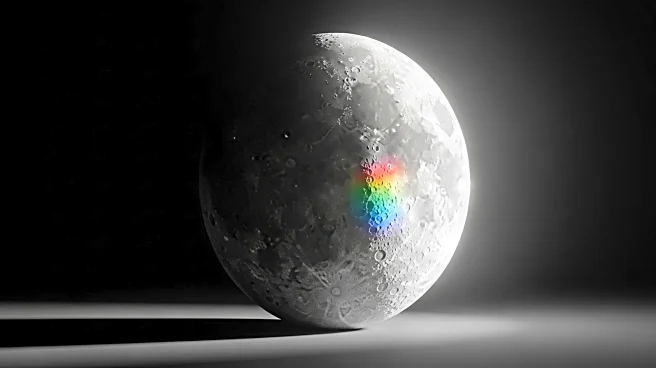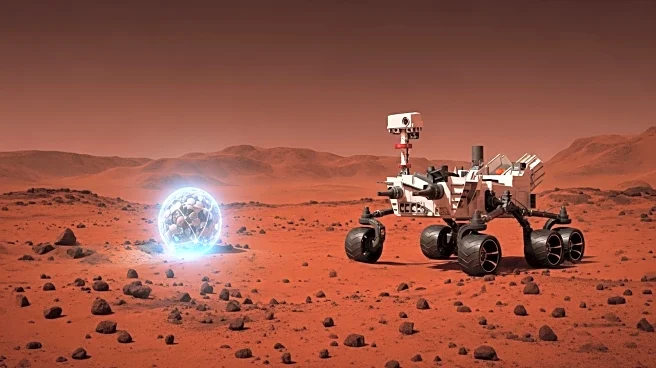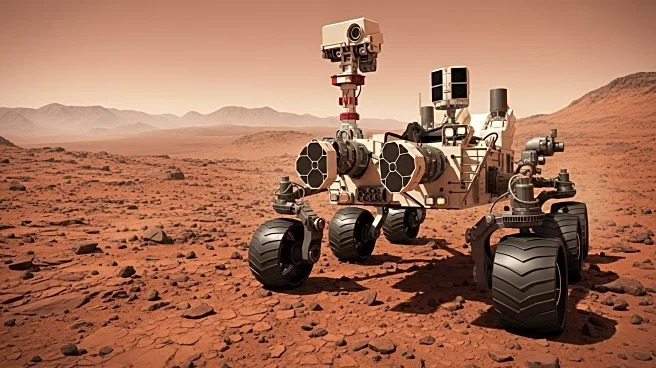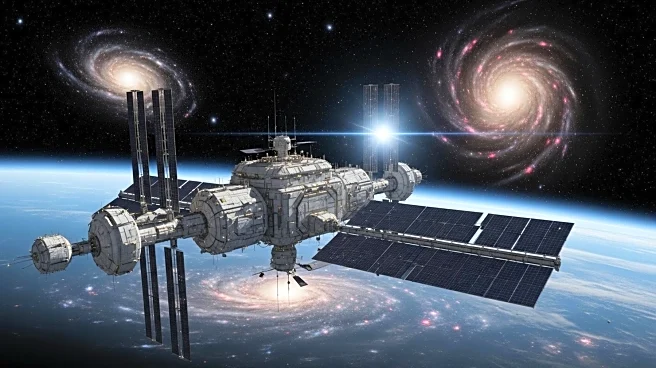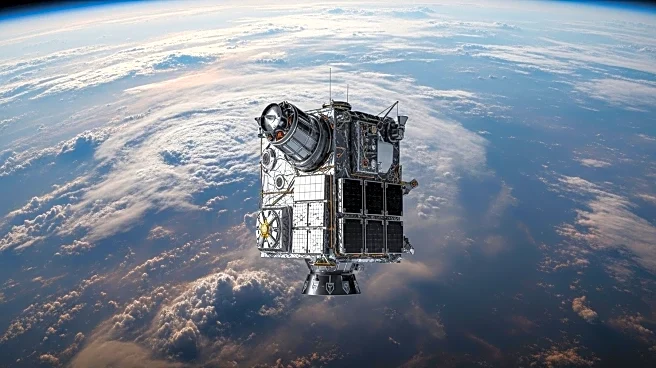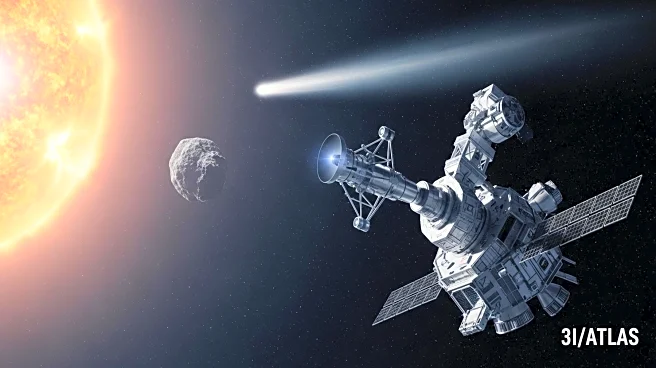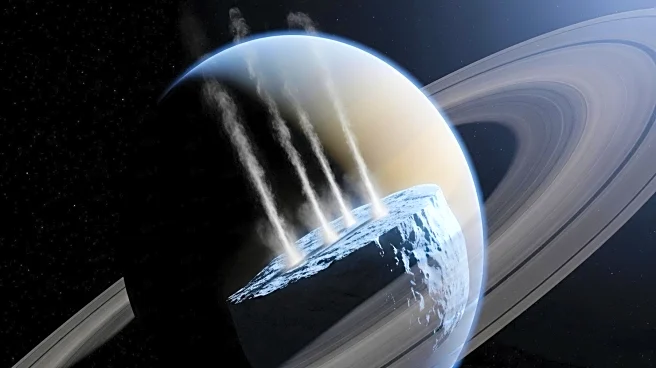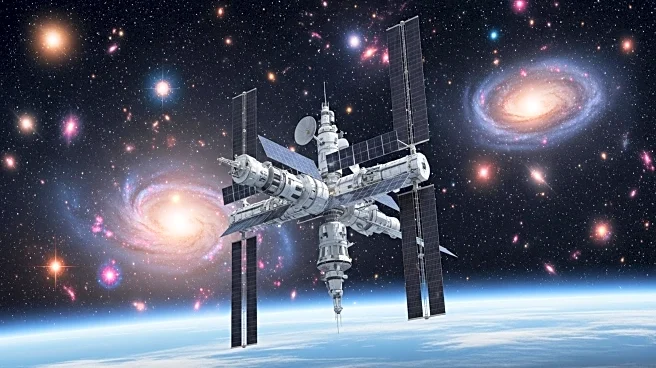What's Happening?
A new study has revealed that the far side of the moon is cooler than the side facing Earth, based on rock samples collected by China's Chang'e 6 mission. The research, conducted by a team from University College London and Peking University, analyzed 300 grams of lunar soil. The samples, primarily composed of basalt grains, were found to be about 2.8 billion years old. The study used electron and ion probes to determine the chemical composition and isotopic patterns of the samples, revealing that the rocks formed at a temperature of approximately 1,100 degrees Celsius, which is 100 degrees cooler than samples from the near side. This temperature difference is attributed to a lower concentration of heat-producing elements like uranium, thorium, and potassium on the far side.
Why It's Important?
The findings provide significant insights into the geological differences between the moon's near and far sides, often referred to as the 'two-faced moon.' Understanding these differences is crucial for lunar science, as it challenges existing theories about the moon's formation and thermal evolution. The study suggests that the uneven distribution of heat-producing elements may have resulted from a massive impact event or the moon's early collision with another celestial body. This research could influence future lunar exploration missions and the study of planetary formation, offering a deeper understanding of celestial bodies' thermal and geological histories.
What's Next?
The research team is continuing to investigate the temperature differences between the moon's near and far sides. They aim to determine the current temperature of the moon's mantle and how these thermal variations have persisted over time. Future studies may involve more detailed analysis of lunar samples and satellite data to refine these findings. The results could guide upcoming lunar missions, including those by NASA and other space agencies, in selecting landing sites and understanding the moon's geological history.
Beyond the Headlines
The study's implications extend beyond lunar science, as it may offer insights into the processes that shape other celestial bodies. The findings could inform models of planetary formation and evolution, particularly regarding the distribution of heat-producing elements. Additionally, understanding the moon's thermal history could have practical applications in future lunar colonization efforts, as temperature variations may affect the feasibility of long-term human habitation.

